OpenEVSE Kit Build Guide
OpenEVSE is a fully open-source EVSE (Electric Vehicle Supply Equipment) charging station designed by OpenEVSE and re-sold in the OpenEnergyMonitor Shop.
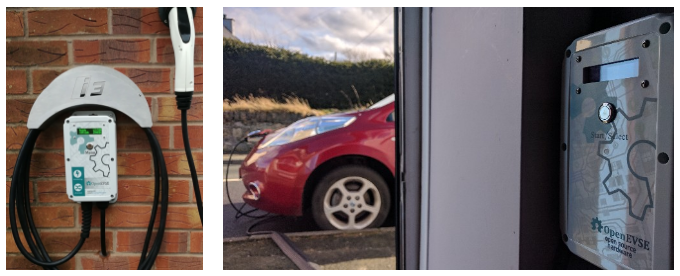
OpenEnergyMonitor has collaborated with OpenEVSE to improve energy monitoring integration and control as well as tailoring the setup for use in Europe and the UK. This page provides European specific build and setup instructions.
Assembly
This build guide is for OpenEVSE kits purchased via the OpenEnergyMonitor Shop.
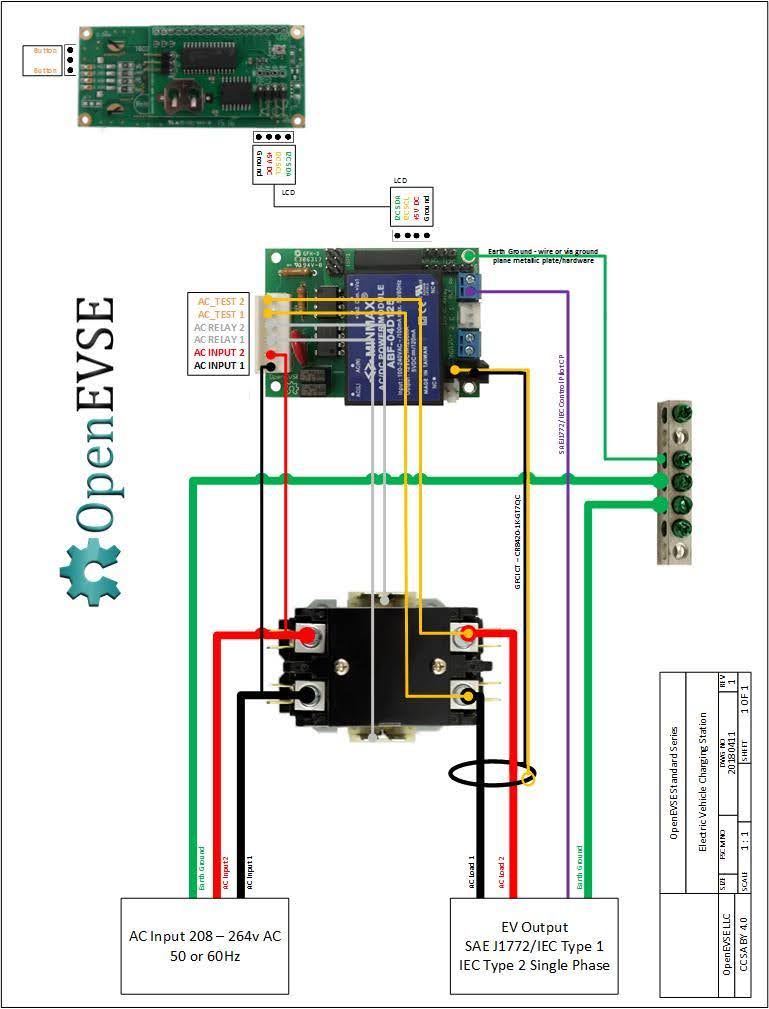
Step 1
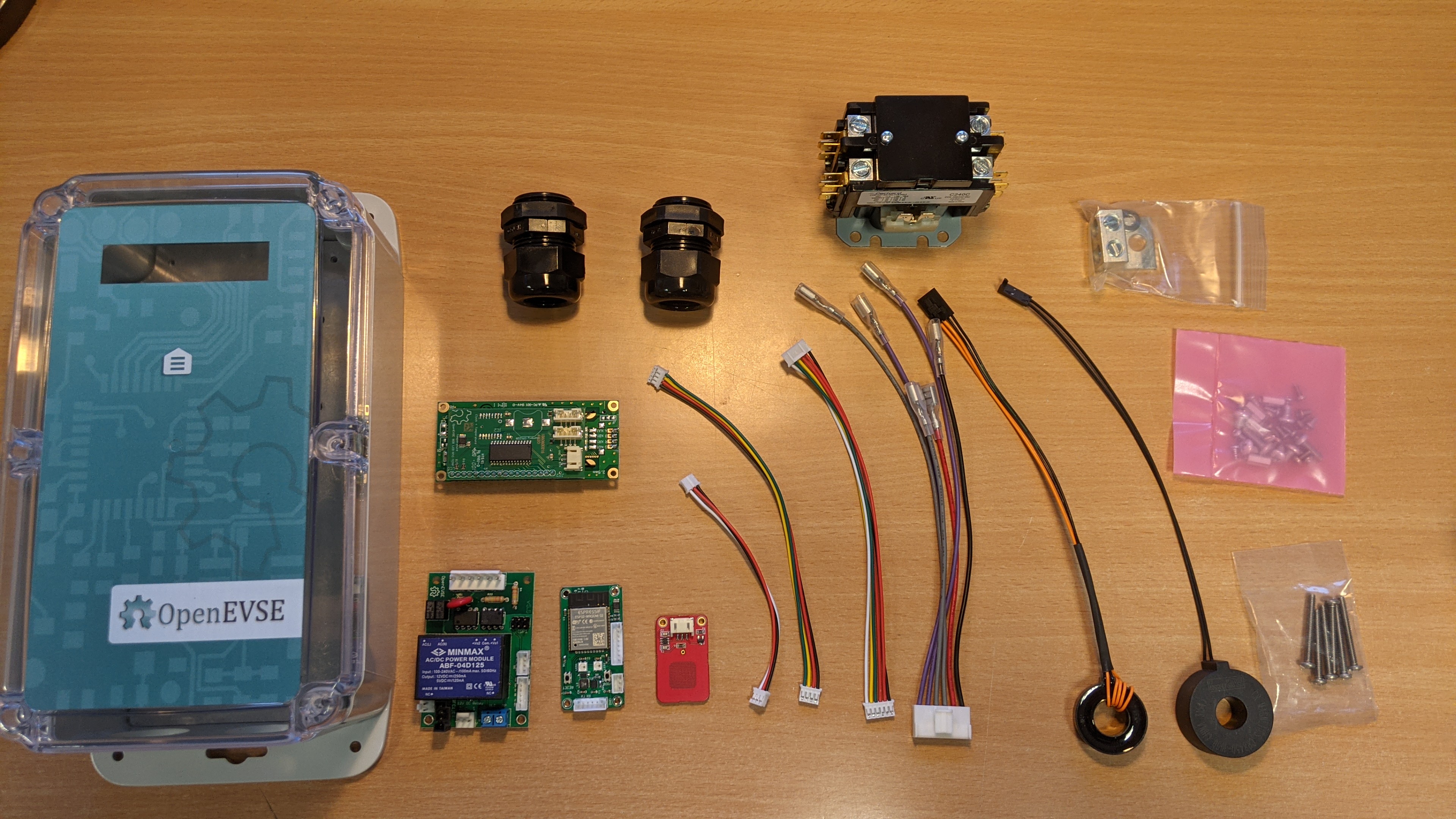
Check kit contents
Note: cable glands and base-plate are inside the enclosure in the photo
Step 2
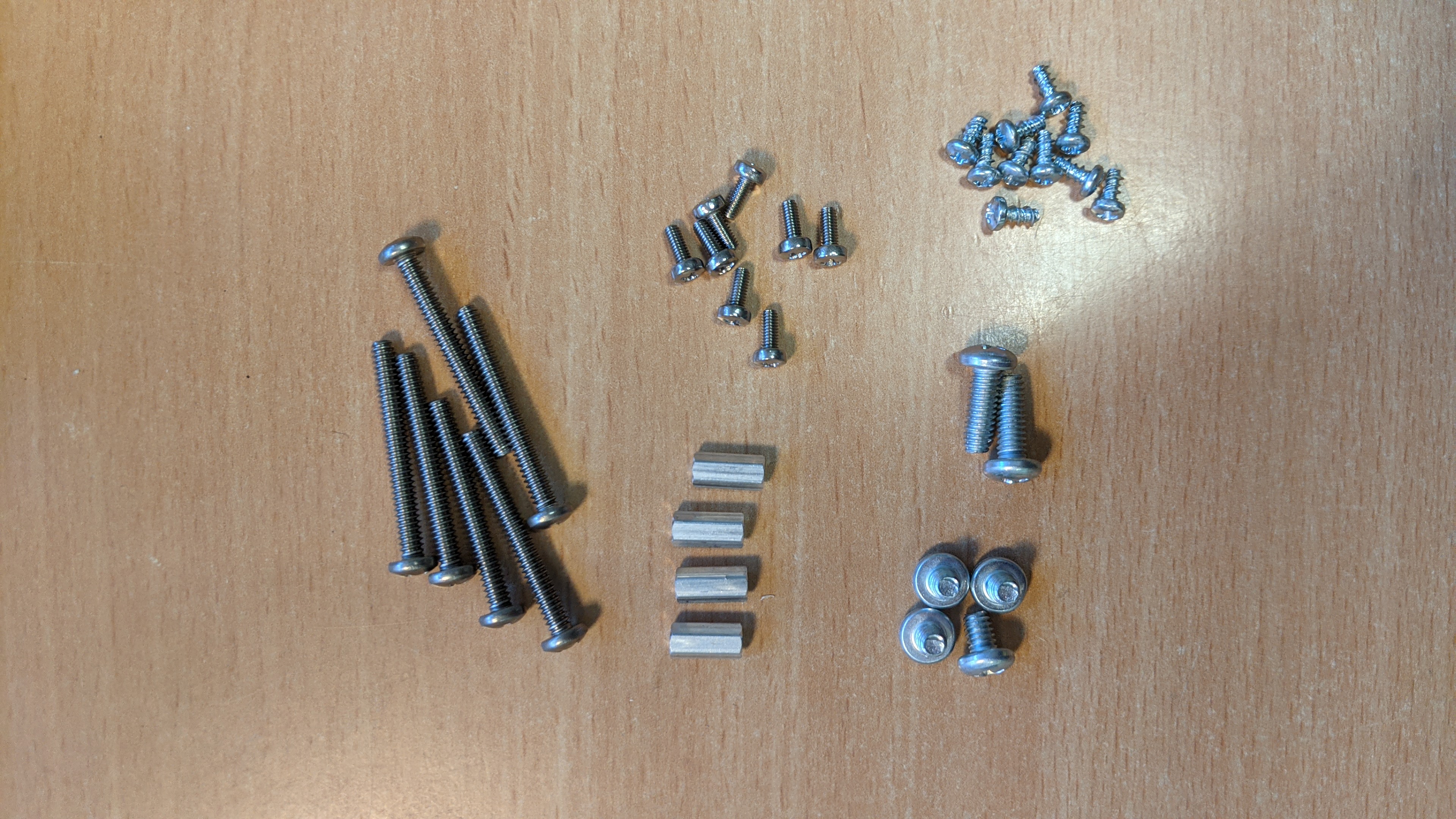
Check screws and fastners
Note: there may be spare screws included
Step 3
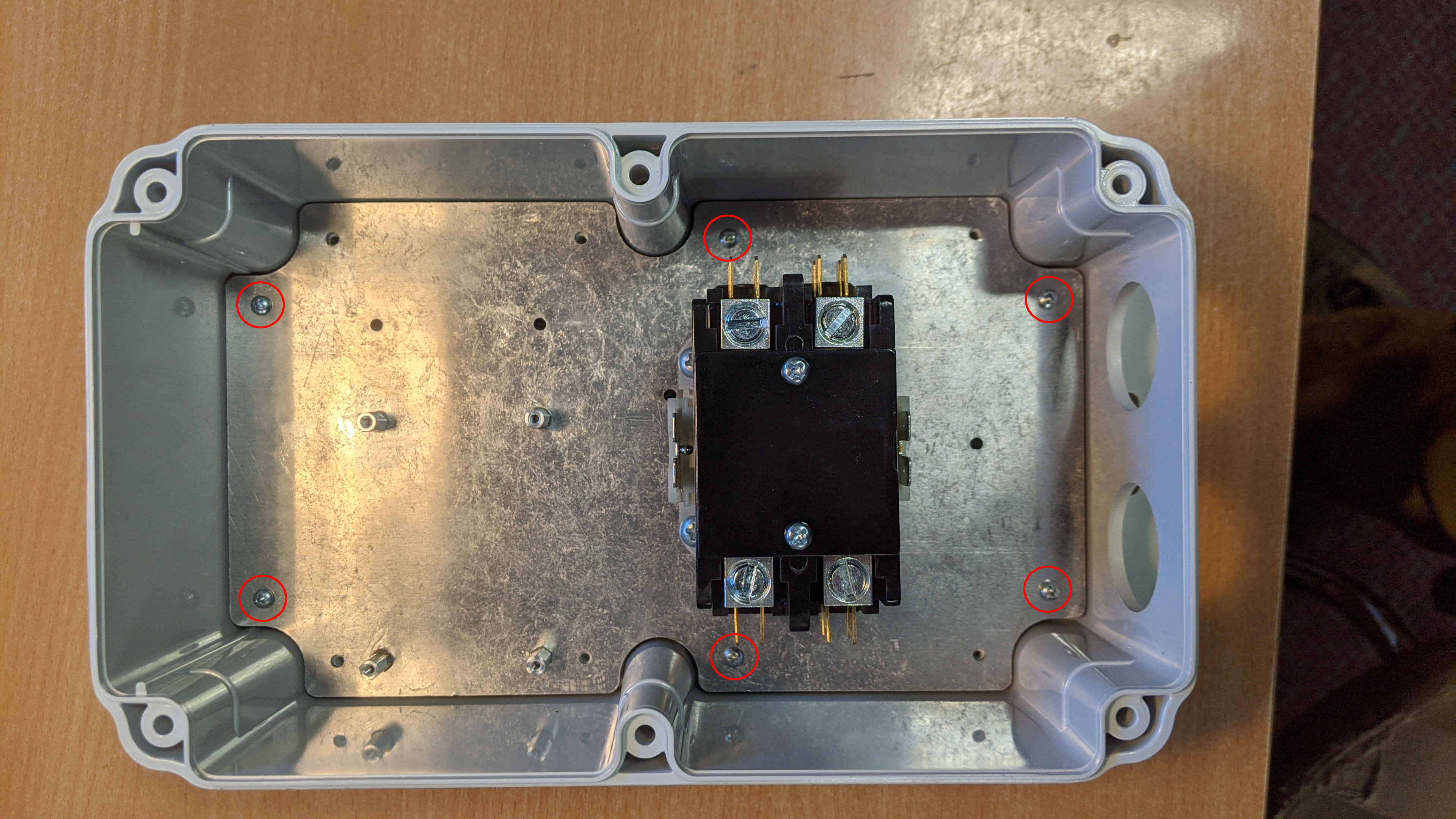
Screw contactor to base plate using FOUR self-tapping screws
Mount the FOUR 10mm standoffs to the top side of the plate with FOUR M2.5 x 6 mm screws
Mount Earth bar to the plate with ONE 1/4” self tapping screws
Mount plate in enclosure with SIX coarse threaded 6mm screws
Step 4
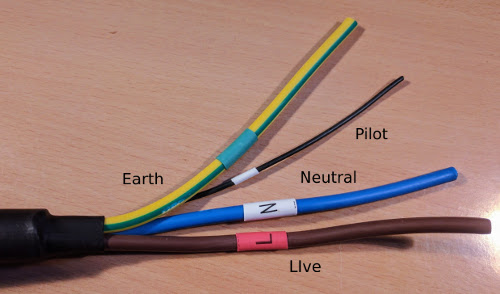
EV cable wiring
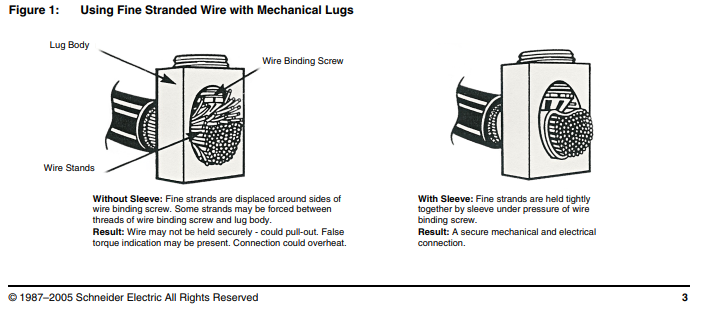
Bootlace ferrules crimped terminals should be used for EV cable connections. This fine stranded wire is susceptible to creeping out of a terminal due to thermal cycling resulting in possible overheating
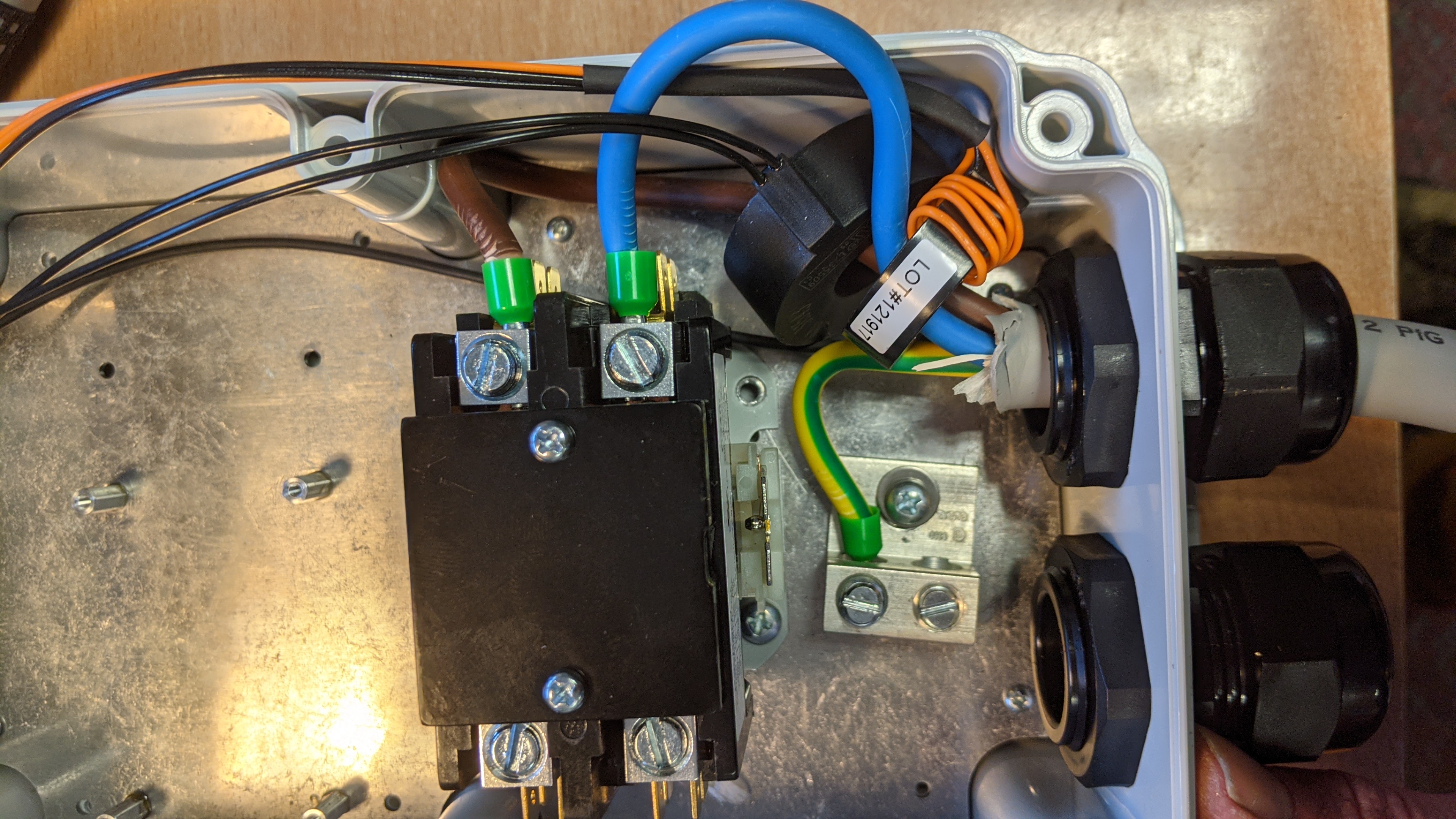
Install the TWO cable glands
Insert EV Cable through the Cable Gland on the right and tighten
Connect the ground wire to the ground block
Thread BOTH Line and Neutral wires through the 4 wire GFCI coil with the orange self test loop (do NOT thread the Earth wire through)
Thread EITHER Line OR Neutral through the Current Measurement Coil
Step 5
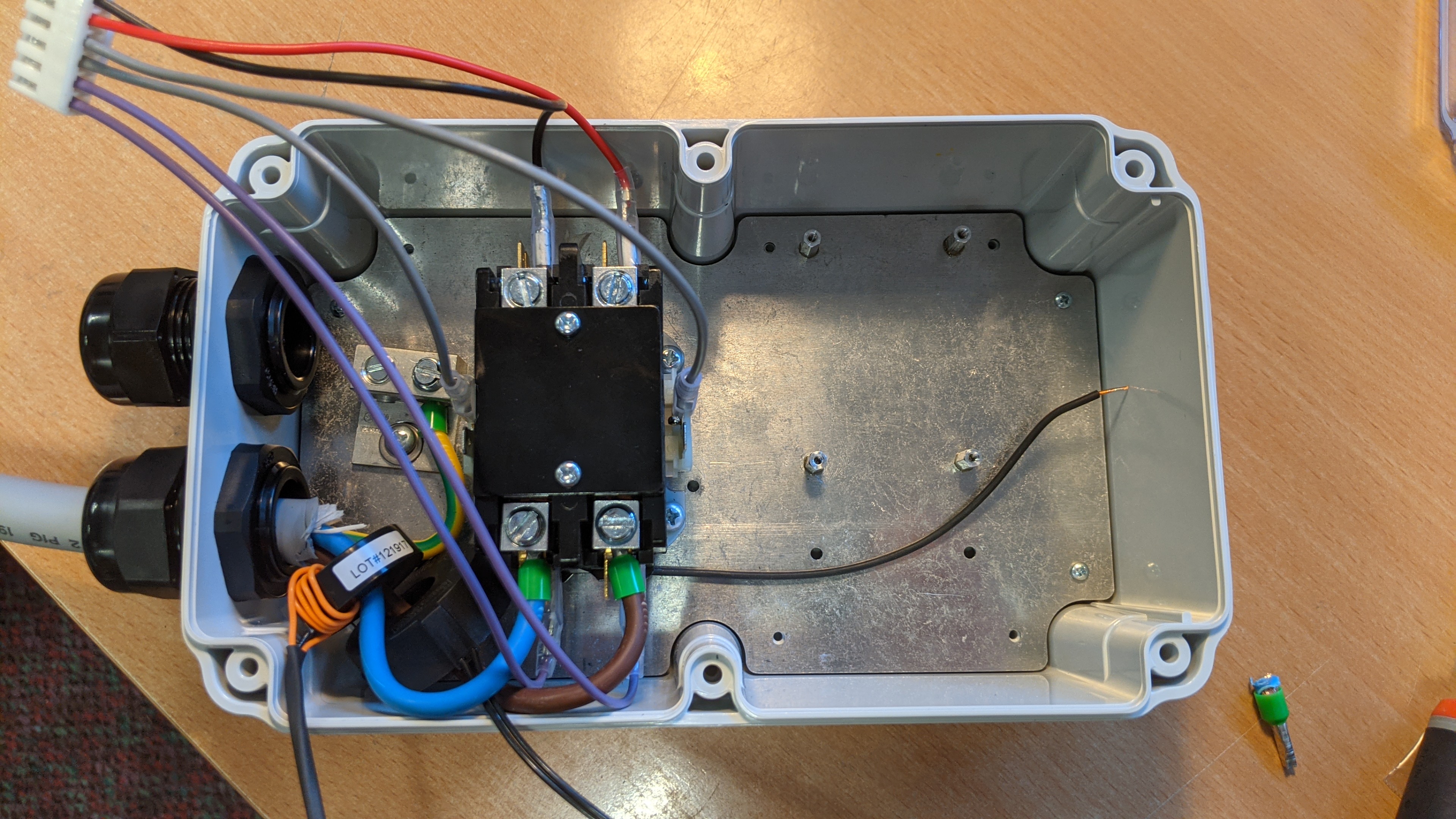
Connect the controller harness to the contactor
Step 6
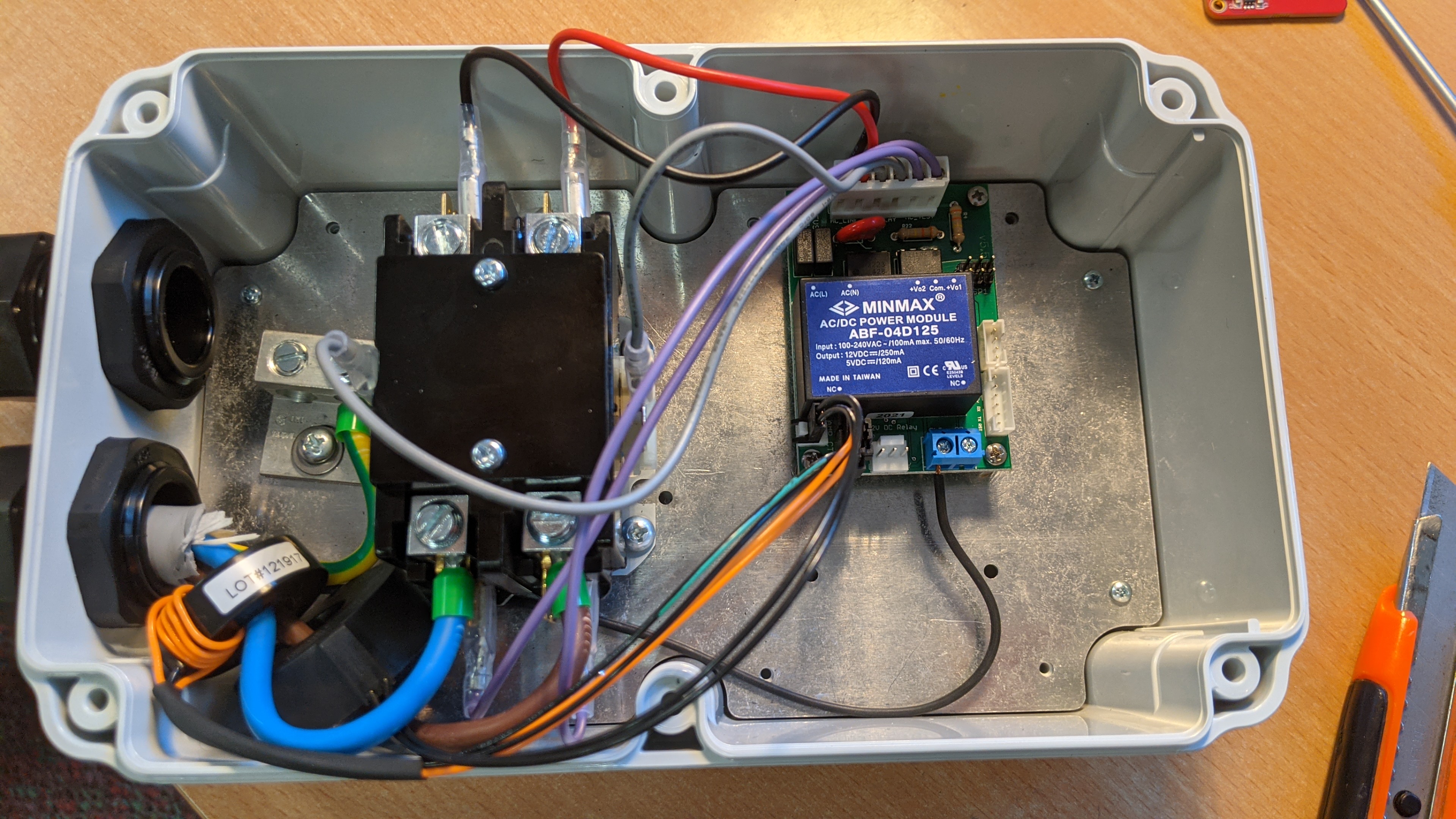
Install the OpenEVSE controller
Connect the pilot wire to the controller
Connect the controller harness to the controller
Connect the GFCI coil and the Current measurement coil to the controller
Step 7
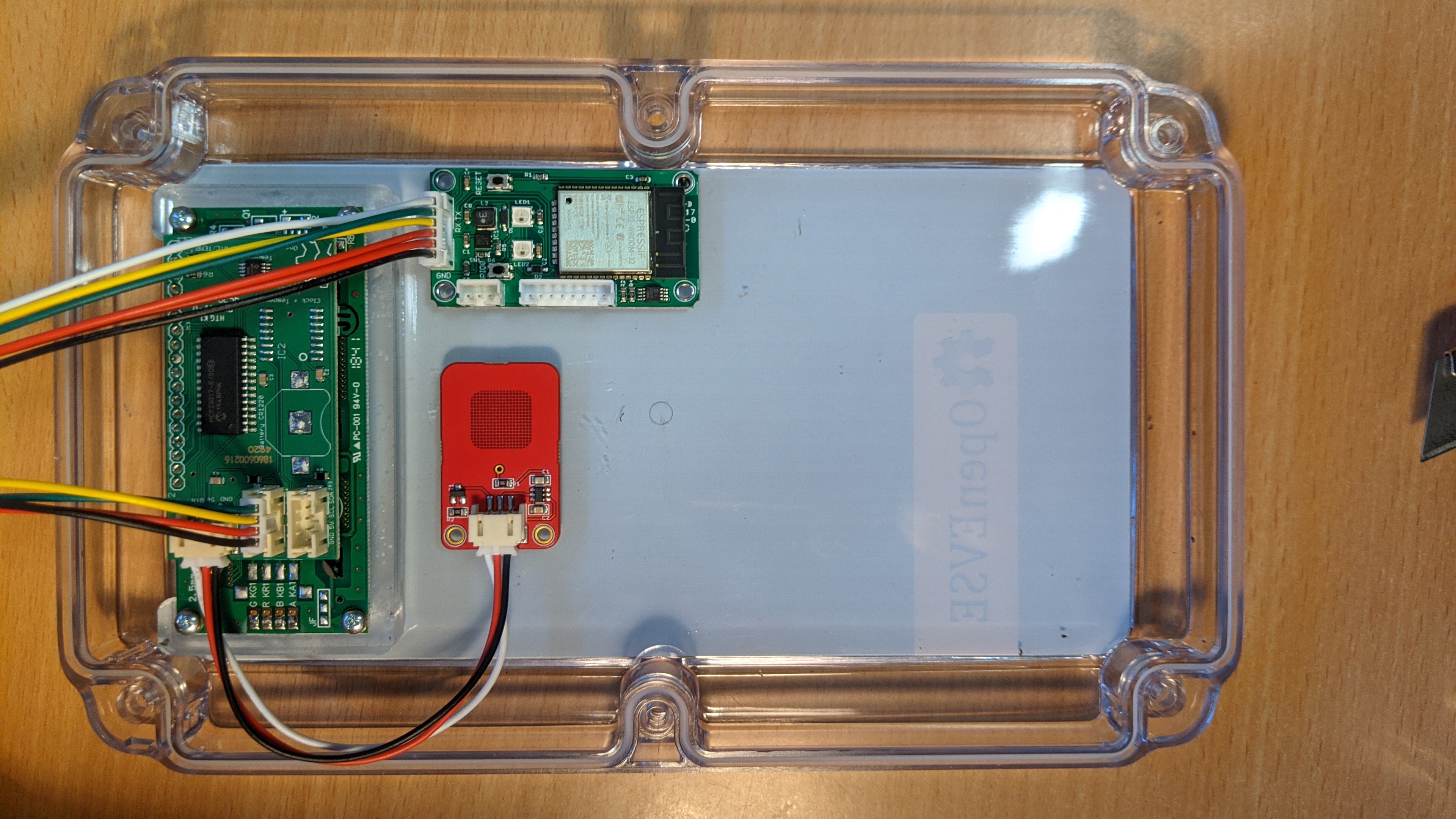
Screw the LCD to the enclosure lid using self tapping screws
Stick the touch button and WiFi module to the enclosure lid using double sided sticky tape. On current models the touch button has been substituted for a physical push button
Step 8
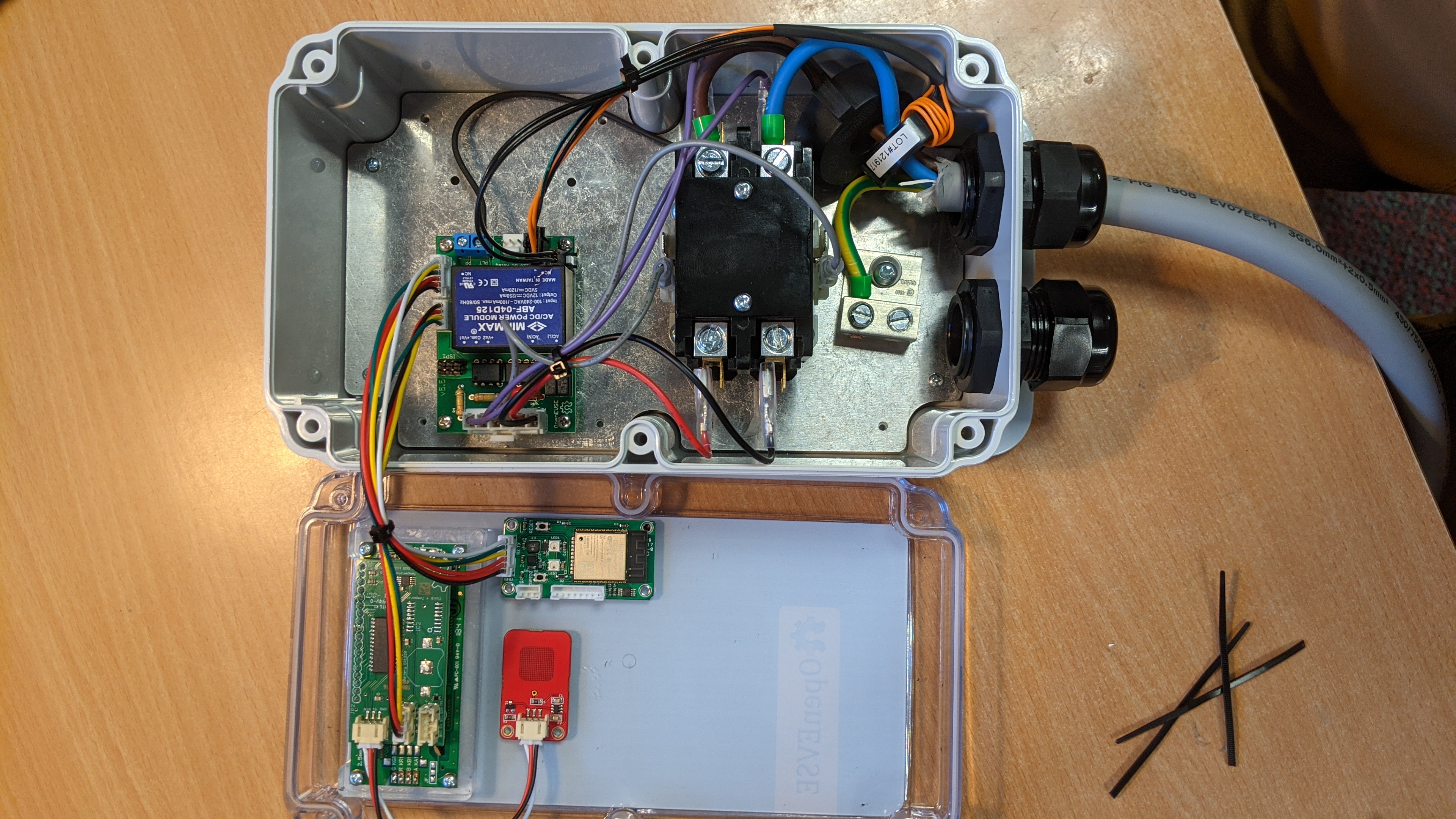
Use zip ties to tidy up the cables
Ensure low voltage cables are routed away from 230V connections
Step 9
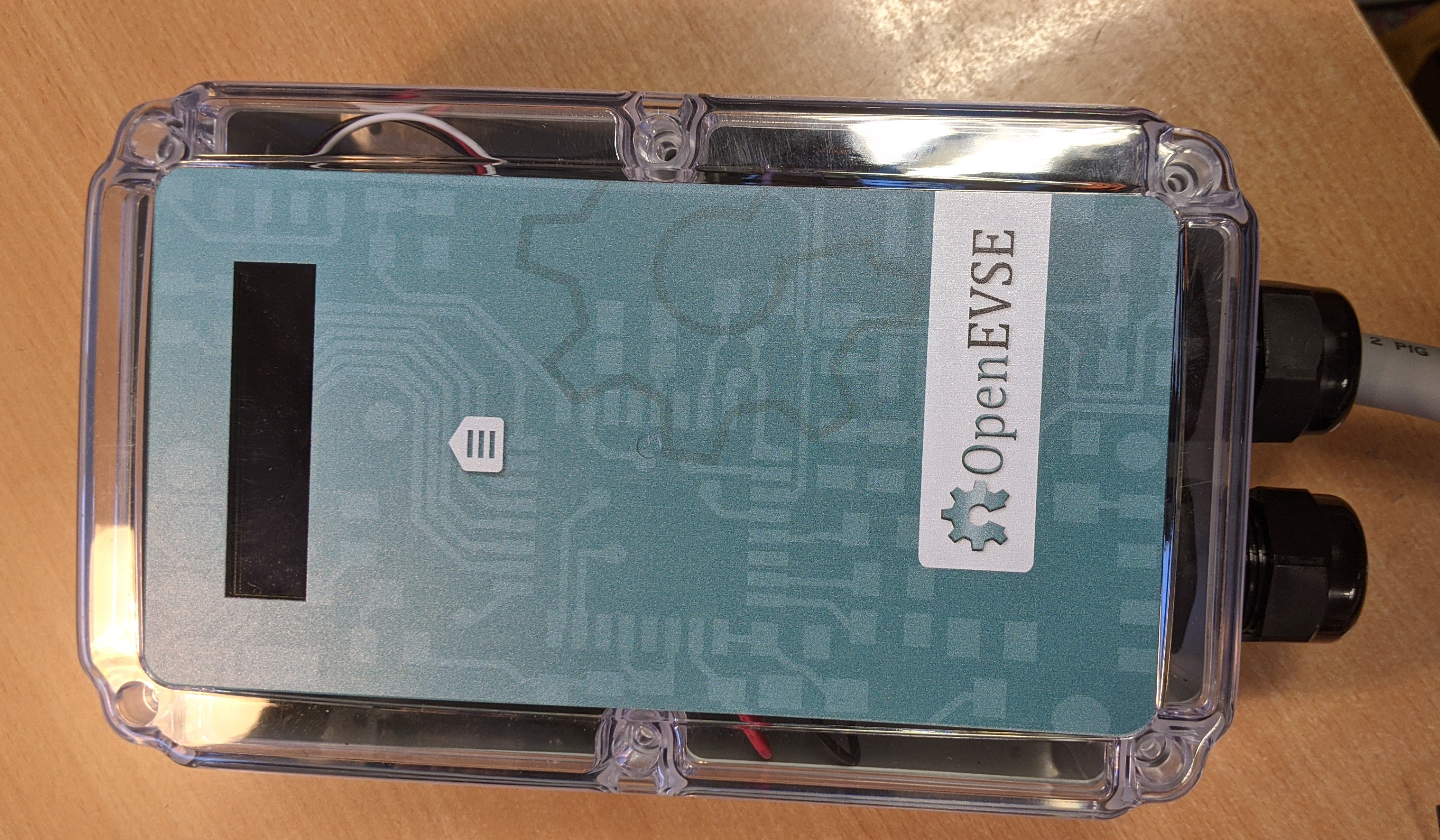
Once the EVSE has been assembled it can be tested
See Testing OpenEVSE
An EV Simulator Kit useful for testing
Supply Connection
Warning
Mains supply connection should only be undertaken by a qualified electrician.
The following is recommendation for a typical domestic installation in the UK:
The EVSE should be installed by a competent electrician in accordance with BS7671:2018+A2:2022 (18th edition) and IET code of practice.
The EVSE requires:
Dedicated circuit
RCD: dual-pole Type-B RCD with 6mA DC leakage protection e.g Chint NL210, Proteus 63/2/30B
MCB: 32A Curve B MCB overcurrent protection (40A MCB can be used providing disconnecting time requirements are met)
EVSE should be earthed in accordance with BS7671:2018+A1:2020.
Earth rod* or CPC disconnection / O-PEN detection device e.g Matt-e unit should be used when applicable**.
PME earth facility shall not be used as means of earthing if EVSE is connected to an EV located outdoors. See BS7671:2018+A2:2022 Section 722.411.4.1
All terminals should be checked for correct tightness upon final installation
*Earth-rod impedance must be <150Ω for reliable charging of all vehicle types (this exceeds the 200 Ω requirement of BS7671).
**It’s possible to obtain RCD, MCB and O-PEN protection in a single unit e.g Matt:e SP-EVCP-B or Garo G8EV40PMEB
User Guide
Once the hardware is up and running see our OpenEVSE Software User Guide
Safety
OpenEVSE units have been designed to exceed the safety requirements for EV Charging Stations from SAE J1772, NEC, UL and CE. Before supplying power to the car (and continuously while charging) the EVSE unit conducts a number of checks, no power is supplied until all the checks have passed. See